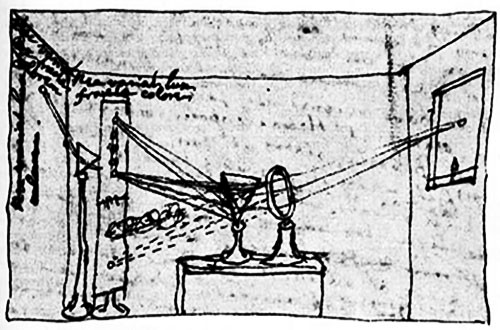The poetry and art of Isaac Newton
Bill Dennison ·‘Scientists who made a difference’ series
This blog accompanying the biographical sketch of Isaac Newton looks at a selection of his writing as poetry and a selection of his scientific sketches as art. The ‘Poetry” uses Newton’s exact words (translated into English from the Latin text) in prose form to focus on the cadence and word choice. These words come from Newton’s book “Philosophie Naturalis Principia Mathematica” published in 1687. This passage deal with Newton’s thinking about the laws of motion and how they apply to many aspects of the natural world. The ‘Art’ uses a sketch that Newton made of his prism experiment conducted in his room at Cambridge University. Newton studied optics and wrote a book “Opticks” in 1704. Newton was an active experimentalist to accompany his scientific theories and this depiction of a simple, yet profound, experiment using a prism to separate white light into its constituent colors illustrates his passion for experimental data.

Mathematical principles of philosophy
Isaac Newton
We consider chiefly those things
Which relate to gravity,
Levity, elastic force,
The resistance of fluids,
And the like forces,
Whether attractive or impulsive;
And therefore,
We offer this work as the
Mathematical principles of philosophy;
For all the difficulty of philosophy
Seems to consist of this--
From the phenomena
Of motions
To investigate the forces of nature,
And then from these forces,
To demonstrate the other phenomena.
From these forces,
By other propositions
Which are also mathematical,
We deduce the motions
Of the planets,
The comets,
The moon,
And the sea.
Light prism experiments in Cambridge
Isaac Newton

About the author
Bill Dennison

Dr. Bill Dennison is a Professor of Marine Science and Vice President for Science Application at the University of Maryland Center for Environmental Science.